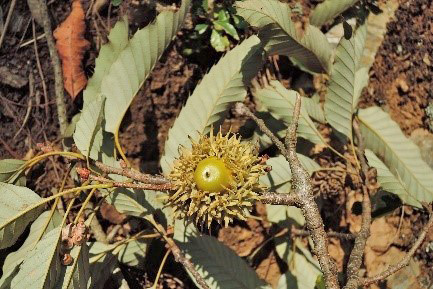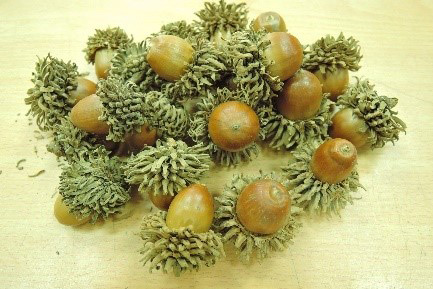Quercus variabilis
The Chinese cork oak is a deciduous tree that is widely distributed throughout Taiwan. It can be found at altitudes of 600 to 2,200 meters on sunny ridges across the island. This resilient tree is not only drought- and wind-resistant, but also fire-resistant. It is often the first tree species to recover after a forest fire, demonstrating its remarkable ability to adapt to the environment.
One of the most striking features of the Chinese cork oak is its thick, elastic bark. This thick cork layer not only effectively reduces water loss to withstand drought, but also protects the internal structure of the tree from damage during forest fires, allowing it to regrow after burning and becoming an important driver of forest succession.
Every spring, the Chinese cork oak blooms with small yellow-green flowers, which are monoecious. The male flowers form pendulous catkins, while the female flowers form spikes. However, what truly captures people's attention is its mature fruit. The fruit of the Chinese cork oak has an adorable shape, with scales that curl backward, resembling a delicate little hat perched on the nut. Due to its charming appearance, the fruit of the cork oak often attracts people to collect and preserve it. Many floral artists also incorporate it into their creations, adding a natural texture and rustic charm to their works.
The Chinese cork oak is primarily distributed in East Asia, including China, South Korea, Japan, and Taiwan. It thrives in sunny environments with well-drained soil and often forms pure stands along ridge lines or on both sides of mountain streams. In Taiwan, there are also low-altitude populations distributed in the coastal lowland areas of Hsinchu and Miaoli. The Chinese cork oak trees in this museum are planted along the trails in the Northern Lowland Area and on the circular hill in the Central Lowland Area.

